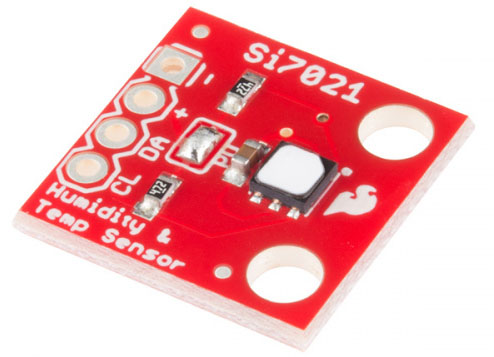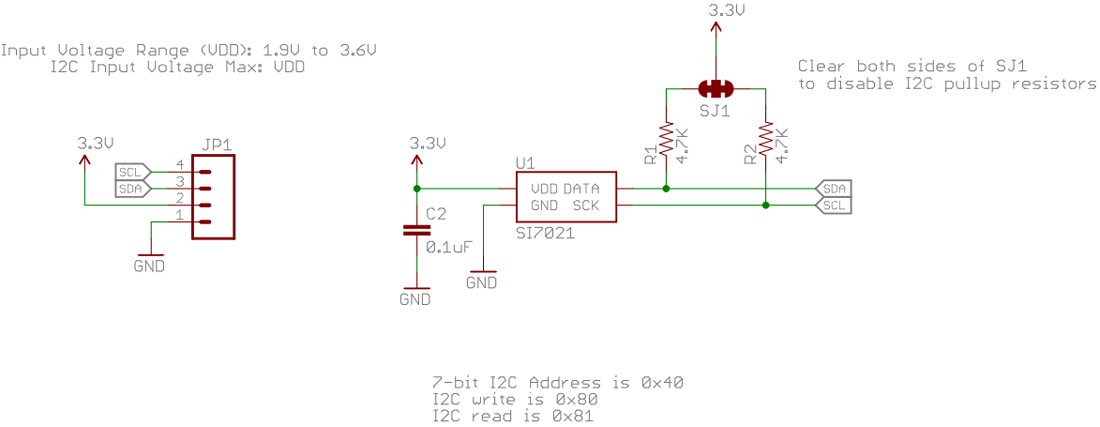Si7021-A20 on SparkFun breakout board
Silicon Labs I²C Humidity and Temperature Sensor

- Precision Relative Humidity Sensor ±3% RH (max), 0-80% RH
- High Accuracy Temperature Sensor ±0.4 °C (max), -10 to 85 °C
- 0 to 100% RH operating range, but this sensor isn't recommended for harsh environments where it could come in contact with water (such as rain)
- Up to -40 to +125 °C operating range
- Operating voltage 1.9 to 3.6 V
- 3.3V sensor - use inline logic level converters or 10kΩ resistors to limit 5V signals
- Low Power Consumption, 150 µA active current, 60 nA standby current
- Factory-calibrated
- Integrated on-chip heater
- Low cost
- Datasheet
Breakout board pinout
-
Power pins
- + Positive power and logic level pin. It should be powered with 3.3V
- - Ground
- CL I2C clock pin
- DA I2C data pin
I2C Data pins
Pull-up Resistors
This breakout board has built-in 4.7KO pull up resistors for I2C communications. If you're hooking up multiple I2C devices on the same bus, you may want to disable/enable the pull-up resistors for one or more boards. On the Si7021, the pull-ups are enabled by default. To disable them, simply use some solder wick to remove the solder on the jumper labeled PU. This will disconnect the resistors from VCC and from the I2C bus.
I²C Addressing
The Si7021 has a default I2C address of 0x40 and cannot be changed!
PTFE Filter
Heads up! Do not remove the white filter on top of the sensor, mistaking it for some IC tape that was left on by mistake. Removing the filter may result in a shortened life span of the device or failure in highly humid areas.
The tiny white cover on the IC is known as a Polytetrafluorethylene (PTFE) Membrane Filter. It keeps moisture out but allows humidity in. This filter is very low-profile, hydrophobic and oleophobic, and excludes particulates down to 0.35 microns in size.
Schema
